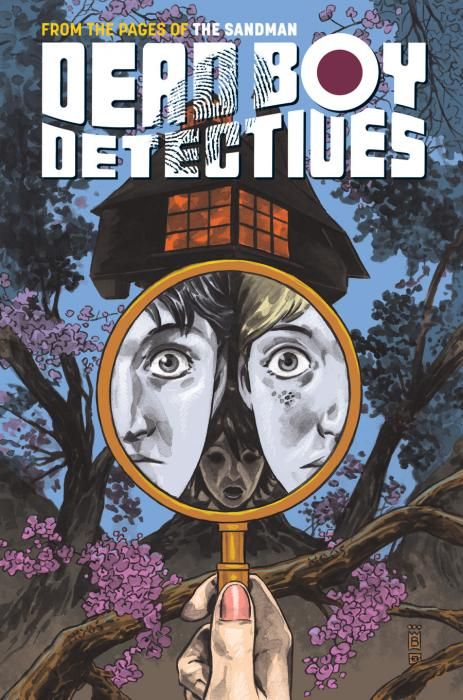Whether delightful or disastrous, the various spin-offs from Neil Gaiman's run on "Sandman" have always provided an interesting experiment as to which material can work independently and which cannot. The latest installment, "Dead Boy Detectives," is an unexpected one: it offers the continued adventures of Edwin Paine and Charles Rowland, the two schoolboy specters who first appeared in Season of Mists. Killed by the bullies at St. Hilarion's School for Boys (in 1916 and 1990, respectively), they are now putting their ghostly powers to good use as detectives.
Their Issue #1 escapade -- interfering in an attempted art heist -- didn't have me very excited, but Edwin and Charles are charming protagonists. They're endearingly plucky, so clearly happier in death than they were in life. Even when engaged in feats of derring-do, they're at ease and enjoying the adventure. For them, death has been freeing.
They don't feel entirely distinct, though the writers try to establish their different voices and characteristics (such as Charles' girl craziness), but that's almost part of the charm. They feel inseparable and utterly in their element.
Todd Klein is given quite a lot to do on letters. The boys recap the story through their journal entries, which hover above their heads during the action, while their new 'client' Crystal communicates both via text message and through voiceover narrative captions. Combined with the dialogue and time-date indicators, it's a glut of text. Sometimes this pays off brilliantly. For instance, when the boys remember their terrible time at St. Hilarion's, the contrast between the narration and the panels is quite effective and troubling. When Crystal is on the verge of death, her subconscious is pinged with a series of short word bubbles that range from the absurd to the ominous; the use of all those disparately colored and written captions provides an attention-grabbing visualization of hovering between life and death.
However, at other times all that text just served to take me out of the story. Rather than grounding the audience in the characters' states of mind or providing valuable background on the scene at hand, some of the texting and journaling cluttered the panels and confused the action. With a bit more editing, this effect could offer all the advantages from the above paragraph without any of these side effects.
Buckingham is up to his usual standards, with clean scene construction and shrewd character designs. He was a perfect fit for this series, with his ability to draw open, expressive faces. At points, Crystal looks like she's staring right at you, all full of courage and a strong sense of self despite her circumstances. Loughridge also performs admirably on the colors, balancing creepiness with cuteness as befits a series about dead schoolchildren and their almost-murdered ally.
However, as I stated earlier, it's clear through the first half that Charles and Edwin feel utterly safe. They're dead, and nothing can hurt them anymore -- and dramatically, that's a problem. There's very little at stake when the protagonists cannot be made to suffer. Luckily, by the end of the issue, Litt and Buckingham have smartly circled them back to the scene of the crime at St. Hilarion's. The boys are loveably bold and brave, but it means more when they act that way in the face of something. By returning them to their literally hellish school, Litt and Buckingham have given them something to be afraid of.

